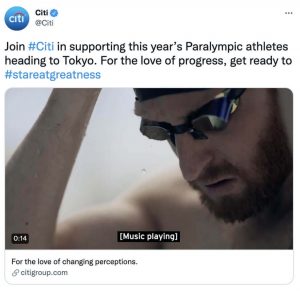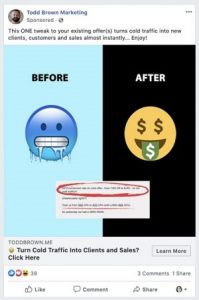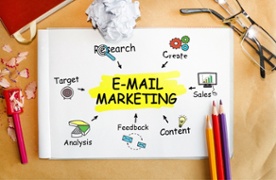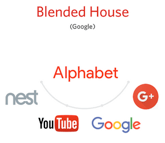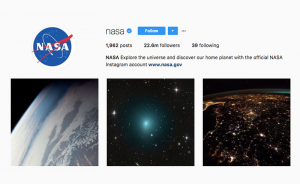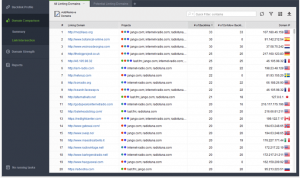Heard about the new partnership between Yext and Uber? Columnist Lydia Jorden explains its implications for tracking return on investment for local search.

The ability to track digital efforts to in-store visits can be the single most difficult challenge a local business conquers.
Since the beginning of time (local search time), marketers have been working to find opportunities to understand how digital efforts drive in-store visits. The challenge we marketers face is that if we are not paying for advertising, it is difficult to uncover ROI and make a case for investing in local search optimization.
Proving value of local listing optimization efforts for a brick-and-mortar location is really limited to the boundaries that are already established. These boundaries include access to solely what is offered within the Google My Business (GMB) platform, Bing Places, Yext, MozLocal and other local listing platforms we use to gauge performance and analytics. Rarely within these platforms are we able to measure the impact that optimizing a local listing had on delivering a monetary, in-store conversion.
However, just recently, Yext announced a partnership with Uber that will set a road map to break these digital to in-store-visit acquisition challenges we battle every day. This partnership will allow for an entirely new way to track the value of in-store visits by way of local search engine optimization.
New Yext tor Uber tool
Yext for Uber is a unique partnership that brings together two companies that capitalize differently on one idea: getting a customer where they need to go.
When a need to find a business arises, Yext is there to make sure that business is appearing across all local search directory sites, so it cannot be missed when an inbound marketing opportunity presents itself. Alternatively, Uber is here to make sure that when that location is found, the searcher has a ride to the business.
Yext’s announcement will allow for customers to directly request a ride on the business’s website and across a variety of digital marketing touch points (such as email). Even more, it gives the Yext customer the ability to deliver in-app branding and create a personal, localized experience for the user while they are on their way to the business. This includes in-app offers.
Yext describes its new service with the following statement:
Drive your customers directly from your website to your doorstep — and engage them in the Uber app with a targeted brand experience while they’re en route with Ride Share and Trip Branding.
This technology will connect those looking for a business with the ability to instantly request a ride. This streamlined approach capitalizes on a user’s behavior and the need for instant gratification, while also reducing the friction that archaic ways of tracking digital to in-store visits creates (a win-win for business owner and customer).
We no longer need to worry about human error in counting website-printed coupons that pass through our doors or tallying every time a guest says “national coffee day” as they pass through our restaurants drive-through for a dollar off their coffee (an incentive only offered on a company website, for example).
What this means for local
Yext is paving the way for an enhanced, closed-loop digital-to-brick-and-mortar-store technology. It is only the surface of what could be a huge revolution for local digital strategy.
Yext is strategic to have pioneered the idea of an Uber partnership. I have no doubt that this functionality will become more and more prevalent as the demand increases for in-depth reporting that will help search practitioners determine local SEO ROI.
Benefits for local search
As local search marketers, our goals are to increase search engine visibility for our clients so that they can better engage customers — and ultimately secure conversions as a result. Especially for brick-and-mortar stores, we find that we can increase local positioning through a variety of techniques. But tracking the results of our efforts can often prove difficult, since we can never say for certain that someone who clicked on “driving directions” traveled to the business (or even made a purchase).
However, we can continue to make a case for local listing optimization, now that we’re able to track that a purchase was made, because we can see the buyer journey — all the way from searching to clicking on the local listing within the local 3-pack to visiting the website to calling an Uber to making a purchase in-store.
Translating to industries
Restaurants will be able to segment email marketing to locations and include a seamlessly integrated link to render an Uber to the restaurant in an instant. Bars will be able to feel confident about getting customers in the door without the fear of someone driving home while intoxicated. Hospitals will be able to offer an almost concierge-type service with ill individuals who can’t drive themselves to get the help they need.
Future predictions
We never know where technology will take us, but I believe that this type of technology will advance itself in an exponential way that will continue to guide ROI for local listing optimization for local business.
[Article on Search Engine Land.]
Some opinions expressed in this article may be those of a guest author and not necessarily Marketing Land. Staff authors are listed here.
Marketing Land – Internet Marketing News, Strategies & Tips
(79)
Report Post
